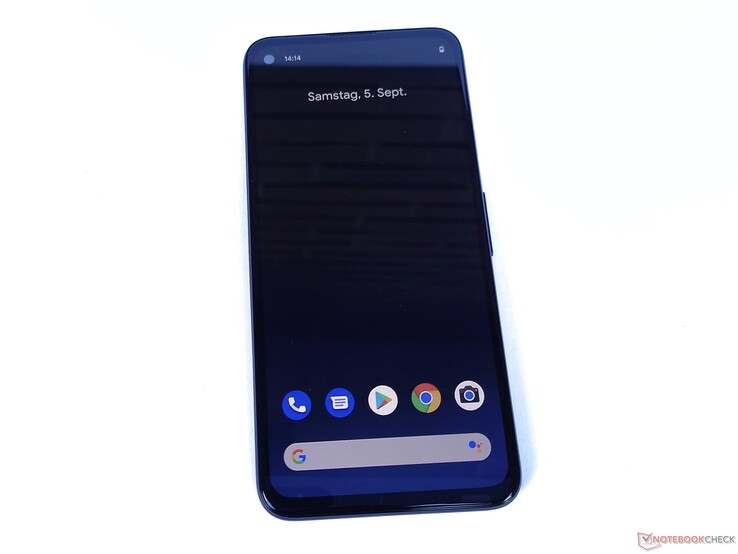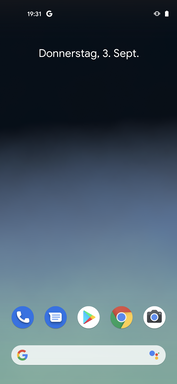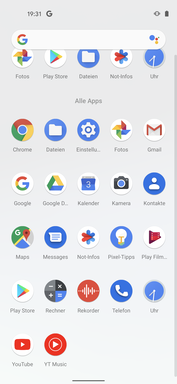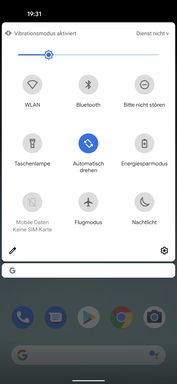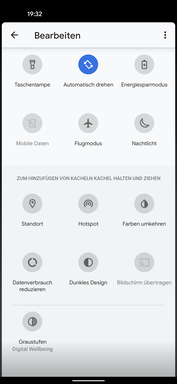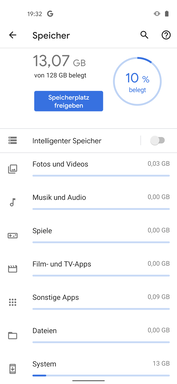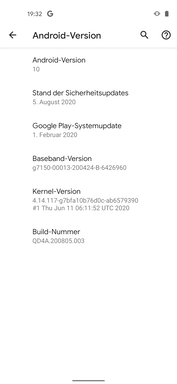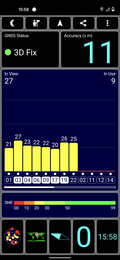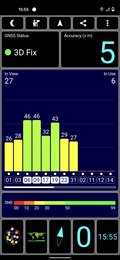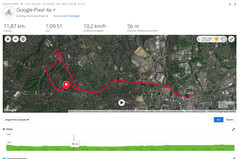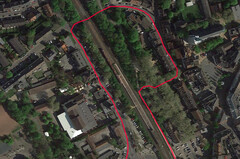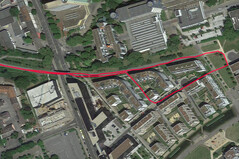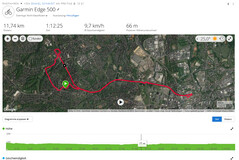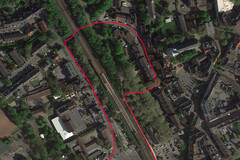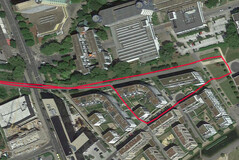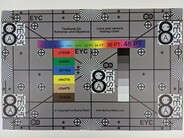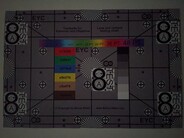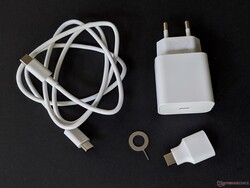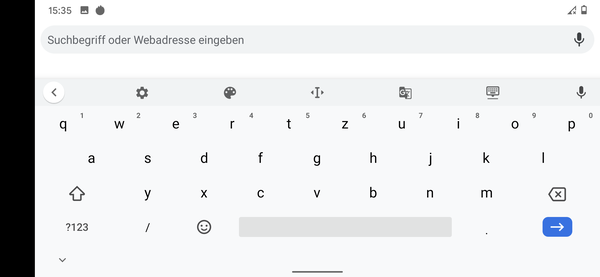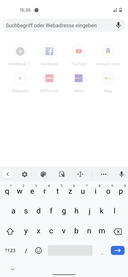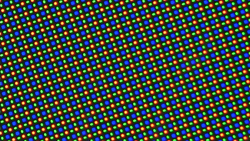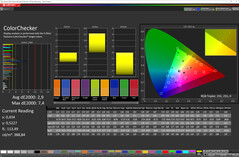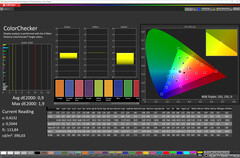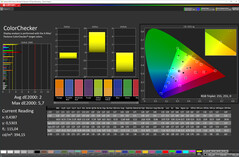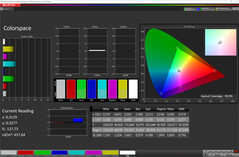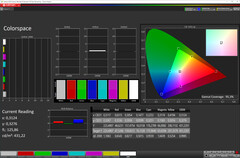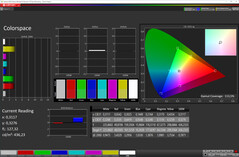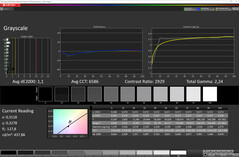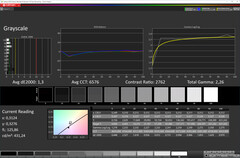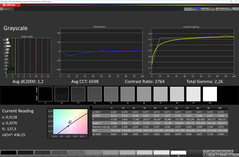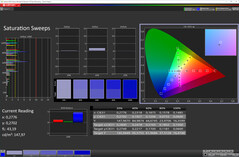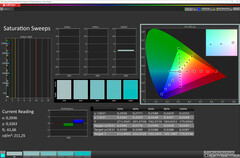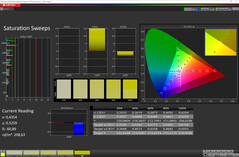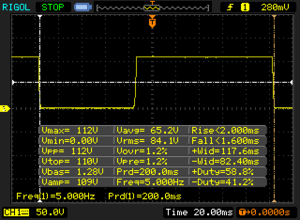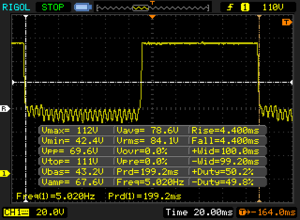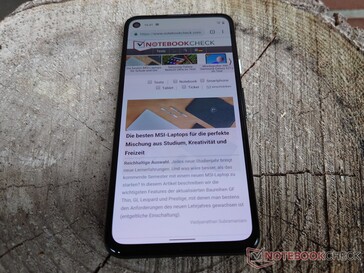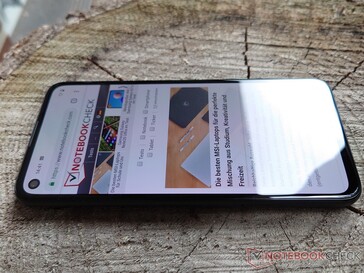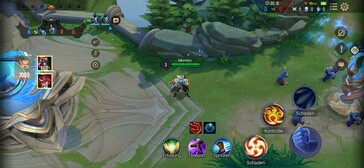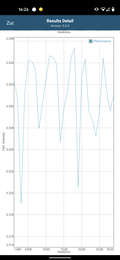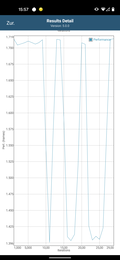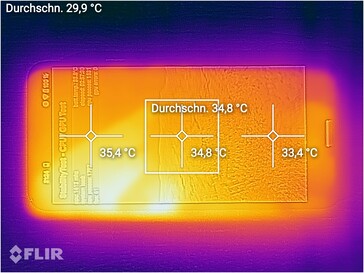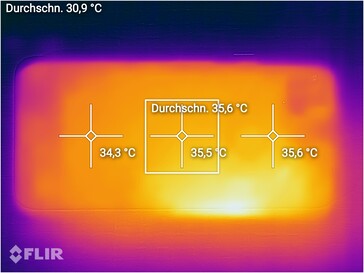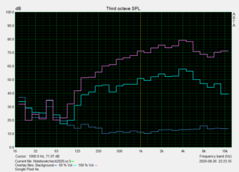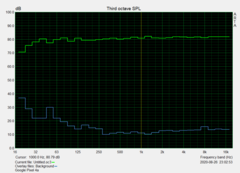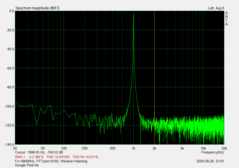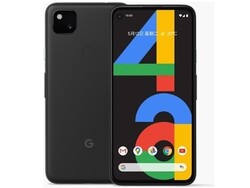Google Pixel 4a smartphone in review: It's not about the megapixels
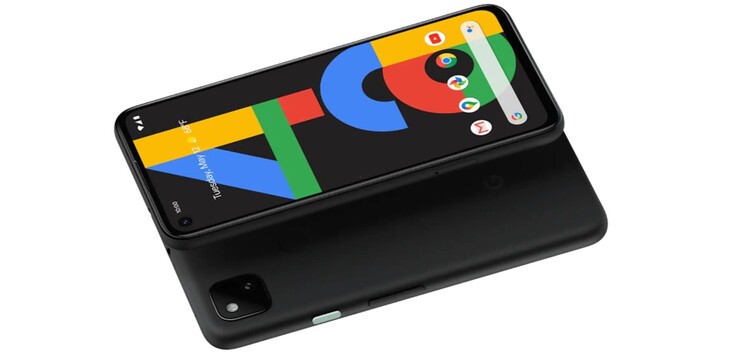
While Google's Pixel 4 and Pixel 4 XL smartphones were still packed with technology that was rather less suitable for everyday use, the Pixel 4a is now a rock-solid smartphone. Besides a camera, a fingerprint scanner, and an OLED display, a Qualcomm Snapdragon 730G SoC and 6 GB of RAM ensure a smooth system operation. A Qualcomm Adreno 618 GPU is responsible for graphics processing, and 128 GB of internal storage is more than adequate in the price range around 350 Euros (~$412).
With this configuration, we compare the Google Pixel 4a in this test to the competing devices listed below. You can also add more smartphones from our database for comparison under each section.
Comparison devices
Rating | Date | Model | Weight | Drive | Size | Resolution | Price |
|---|---|---|---|---|---|---|---|
| 83.6 % v7 (old) | 09 / 2020 | Google Pixel 4a SD 730G, Adreno 618 | 143 g | 128 GB UFS 2.0 Flash | 5.80" | 2340x1080 | |
| 85.2 % v7 (old) | 05 / 2020 | Apple iPhone SE 2020 A13 Bionic, A13 Bionic GPU | 148 g | 128 GB NVMe | 4.70" | 1334x750 | |
| 78.6 % v7 (old) | 08 / 2020 | Sony Xperia 10 II SD 665, Adreno 610 | 151 g | 128 GB eMMC Flash | 6.00" | 2520x1080 | |
| 79.8 % v7 (old) | 07 / 2020 | Samsung Galaxy M31 Exynos 9611, Mali-G72 MP3 | 191 g | 64 GB UFS 2.0 Flash | 6.40" | 2340x1080 | |
| 82.9 % v7 (old) | 08 / 2020 | Xiaomi Mi Note 10 Lite SD 730G, Adreno 618 | 204 g | 64 GB UFS 2.0 Flash | 6.47" | 2340x1080 |
Case - Pixel smartphone made of robust plastic
The case of the Pixel 4a, including the frame, is made of plastic. The frame is very stable, and the Google smartphone shows overall high-quality workmanship. The front is dominated by the display, which is protected by Corning Gorilla Glass 3; the only thing that interrupts the display's surface is the punch-hole camera. Moreover, you can find the main camera and a fingerprint scanner on the back. In comparison with other smartphones, the Google Pixel 4a is significantly smaller. With a display diagonal size of 5.8 inches, it's an extremely manageable smartphone. The weight is also very low at 143 grams.
Connectivity - Android phone with audio jack
Google has installed a Qualcomm Snapdragon 730G SoC, a Qualcomm Adreno 618 graphics unit, 6 GB of RAM, and 128 GB of internal storage in the Pixel 4a. The manufacturer has forgone a microSD card reader, and there is also no dual-SIM slot. However, an eSIM can be registered in addition to the single nano SIM. The VoWLAN and VoLTE functions are also available.
The USB Type-C port can be used for wired data transfers; it supports the USB 3.1 Gen 1 standard internally. In addition, there's also a combined 3.5 mm audio jack. The Camera2 API provides the "Full" support level, and DRM Widevine L1 allows video content to be streamed in high resolution.
Software - Updates for three years
With the Google Pixel 4a, users get a pure Android 10 operating system with security patches at the level of August 5, 2020. No preinstalled applications from second or third parties are found. However, Google will extend the already existing functions with regular feature drops.
In this way, for example, apps suggested by time of day and improved screenshot functions found their way onto Pixel smartphones. Automatic folder names make it easier to find installed applications, and the keyboard app now offers smart replies in any messaging application. The latter, however, is currently only available with GBoard and in the English language. In addition, the manufacturer guarantees operating system and security updates for the next three years starting from the smartphone's release date.
An update to Android 11 was available towards the completion of our review.
Communication and GPS - Pixel 4a with fast WLAN
The Google Pixel 4a can establish mobile radio connections in GSM, 3G, and LTE networks. With LTE Cat. 12, download speeds of up to 600 Mb/s and upload rates of up to 100 Mb/s are possible.
In close ranges, the Google phone allows communication via NFC, Bluetooth 5.0, and Wi-Fi 5. In combination with our Netgear Nighthawk AX12 reference router, the Pixel 4a achieved average speeds of 668 Mb/s for receiving data and 620 Mb/s for sending data over WLAN.
| Networking | |
| iperf3 transmit AX12 | |
| Apple iPhone SE 2020 | |
| Google Pixel 4a | |
| Sony Xperia 10 II | |
| Xiaomi Mi Note 10 Lite | |
| Samsung Galaxy M31 | |
| iperf3 receive AX12 | |
| Google Pixel 4a | |
| Apple iPhone SE 2020 | |
| Xiaomi Mi Note 10 Lite | |
| Samsung Galaxy M31 | |
| Sony Xperia 10 II | |
The Google Pixel 4a can determine its location using GPS, GLONASS, and Galileo. With the app GPS Test, we are able to achieve an accuracy of up to four meters outdoors. In closed rooms, it was possible to obtain a position with an accuracy of up to 11 meters.
On our mandatory bicycle ride, the Pixel 4a doesn't track the route quite as accurately as our reference device, the Garmin Edge 500; but the deviation is rather small in curves as well as on prolonged straight sections, which is why the Google smartphone is still well suited for navigation tasks.
Telephone and call quality - Clear connection
The Pixel 4a's telephone app allows quick access to your stored favorites and provides a button to display a keypad. Two additional tabs show recent calls and stored contacts. The Pixel 4a offers a good volume during calls and reliably filters out ambient noise. As a result, it's also suitable for use in noisy environments. In addition, the voices of the people on each end are transmitted clearly and understandably in both directions.
Cameras - Very good camera in the Google Pixel 4a
Google equips the Pixel 4a with a simple main camera. It has an image resolution of 12.2 MP and an f/1.7 aperture of 27 mm. The front-facing camera consists of an 8 MP sensor with an f/2.0 aperture and a 24 mm focal length. Portrait photos taken with it show many details and strong colors. The image quality can be influenced with a retouching mode before the photo is taken and adjusted afterwards with an individual bokeh effect. In the settings menu, you can also activate RAW images and set the resolution between "Full" and "Medium".
The main camera of the Pixel 4a produces images with a very good quality. Our sample photographs show a lot of details and strong colors, but you can see the images becoming increasingly grainy outside the focus area and towards the edges. However, this is only clearly noticeable when zooming in. In close-up photography, the bokeh effect occasionally produces blurred edges where the different colors overlap. Since the main camera of the Google smartphone doesn't have a zoom lens, this effect needs to be processed by the software. The Pixel 4a also does this quite well, with object edges looking slightly blurred and details somewhat washed-out. Furthermore, our test subject is still clearly recognizable under poor lighting conditions. There are no dark areas on the picture; only a subtle graininess that covers the whole image can be seen. The camera app barely offers users any options to adjust the resulting image. In addition to the functions of the selfie camera described above, there are only two sliders that can be used to adjust brightness and slightly compensate for backlighting.
The video function delivers a similar quality to our test photographs. The camera also handles the changes between light and dark image areas very well. In terms of resolution, users can switch between Full HD and 4K, with only Full HD offering a choice between 30 and 60 fps.
Image comparison
Choose a scene and navigate within the first image. One click changes the position on touchscreens. One click on the zoomed-in image opens the original in a new window. The first image shows the scaled photograph of the test device.
Main camera (rabbit)Main camera (flower)Zoom (5x)Low lightUnder controlled lighting conditions, our test photo of the ColorChecker Passport shows that the Pixel 4a camera usually captures colors slightly brighter than they should be. The test chart shows a strong and detailed image here, with a clear paleness becoming noticeable towards the lower corners.
At a fixed illumination level of one lux, both the test chart and colors are only just recognizable and show a visible gray veil. Overall, however, the image contents remain visible.
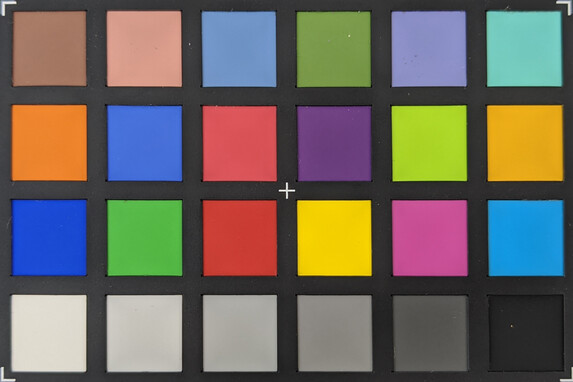
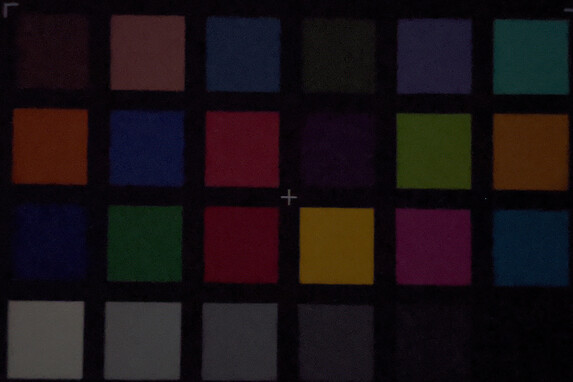
Accessories and warranty - Not much in the box
The Pixel 4a comes with a USB power adapter and its corresponding USB Type-C cable, a SIM tool, and a USB Type-A to Type-C adapter. Google also offers appropriate cases in its own store and wireless headphones as well in the form of the Pixel Buds.
Google grants buyers of the Pixel 4a a warranty period of 24 months.
Input devices and handling - Very fast fingerprint scanner
Google's GBoard keyboard app is available for users to enter text. It is well suited for the input of longer sentences and can be customized. The touchscreen responds reliably to every input, but it's not well suited for longer swiping gestures due to its comparatively high surface resistance. However, thanks to the deep integration of Google Assistant and the functions of the recorder app, many steps can also be performed by voice.
There's a fingerprint scanner on the back of the Pixel 4a that reacts extremely quickly to stored fingerprints. On the other hand, face recognition is not available.
Display - Vivid colors with the Pixel phone's OLED display
The Google Pixel 4a display consists of a 5.8-inch OLED panel and offers a resolution of 2340x1080 pixels. At an average of 707 cd/m², the brightness is better than on the other devices in our test field, and its distribution is at least on par with the competition at 96%. Without an activated ambient light sensor, the Pixel smartphone only reaches a luminosity of 434 cd/m². In the APL50 test, however, a very good 905 cd/m² is possible. The lowest adjustable brightness is 2.14 cd/m².
According to our measurements, the display flickers in a frequency range between 122.5 and 255.1 Hz depending on the brightness level, which could cause difficulties for users with sensitive eyes.
| |||||||||||||||||||||||||
Brightness Distribution: 96 %
Center on Battery: 705 cd/m²
Contrast: ∞:1 (Black: 0 cd/m²)
ΔE ColorChecker Calman: 0.9 | ∀{0.5-29.43 Ø4.79}
ΔE Greyscale Calman: 1.3 | ∀{0.09-98 Ø5}
95.3% sRGB (Calman 2D)
Gamma: 2.26
CCT: 6576 K
| Google Pixel 4a OLED, 2340x1080, 5.8" | Apple iPhone SE 2020 IPS, 1334x750, 4.7" | Sony Xperia 10 II OLED, 2520x1080, 6" | Samsung Galaxy M31 Super AMOLED, 2340x1080, 6.4" | Xiaomi Mi Note 10 Lite AMOLED, 2340x1080, 6.5" | |
|---|---|---|---|---|---|
| Screen | -12% | -46% | -85% | -3% | |
| Brightness middle (cd/m²) | 705 | 688 -2% | 591 -16% | 622 -12% | 605 -14% |
| Brightness (cd/m²) | 707 | 659 -7% | 590 -17% | 615 -13% | 608 -14% |
| Brightness Distribution (%) | 96 | 92 -4% | 97 1% | 97 1% | 95 -1% |
| Black Level * (cd/m²) | 0.28 | ||||
| Colorchecker dE 2000 * | 0.9 | 1 -11% | 1.42 -58% | 2.25 -150% | 0.84 7% |
| Colorchecker dE 2000 max. * | 1.9 | 2.2 -16% | 3.83 -102% | 6.22 -227% | 1.8 5% |
| Greyscale dE 2000 * | 1.3 | 1.7 -31% | 2.4 -85% | 2.7 -108% | 1.3 -0% |
| Gamma | 2.26 97% | 2.25 98% | 2.215 99% | 2.019 109% | 2.211 100% |
| CCT | 6576 99% | 6790 96% | 9014 72% | 6810 95% | 6310 103% |
| Contrast (:1) | 2457 |
* ... smaller is better
Screen Flickering / PWM (Pulse-Width Modulation)
| Screen flickering / PWM detected | 255.1 Hz | ≤ 99 % brightness setting | |
The display backlight flickers at 255.1 Hz (worst case, e.g., utilizing PWM) Flickering detected at a brightness setting of 99 % and below. There should be no flickering or PWM above this brightness setting. The frequency of 255.1 Hz is relatively high, so most users sensitive to PWM should not notice any flickering. However, there are reports that some users are still sensitive to PWM at 500 Hz and above, so be aware. In comparison: 53 % of all tested devices do not use PWM to dim the display. If PWM was detected, an average of 8152 (minimum: 5 - maximum: 343500) Hz was measured. | |||
As is usual for OLED panels, the display of the Google Pixel 4a provides an excellent contrast ratio and a black level of 0 cd/m². Consequently, colors on the display appear very well separated from each other, and black tones are deep and rich. Users also have the option of adjusting the color temperature with the "Adaptive", "Natural" and "Boosted" modes found in the settings menu.
The CalMAN analysis shows that the color components are extremely balanced in all three modes. However, a different saturation and a higher or lower Delta E 2000 deviation produces an image that looks correspondingly more vivid or paler.
Display Response Times
| ↔ Response Time Black to White | ||
|---|---|---|
| 3.6 ms ... rise ↗ and fall ↘ combined | ↗ 2 ms rise | |
| ↘ 1.6 ms fall | ||
| The screen shows very fast response rates in our tests and should be very well suited for fast-paced gaming. In comparison, all tested devices range from 0.1 (minimum) to 240 (maximum) ms. » 14 % of all devices are better. This means that the measured response time is better than the average of all tested devices (20.3 ms). | ||
| ↔ Response Time 50% Grey to 80% Grey | ||
| 8.8 ms ... rise ↗ and fall ↘ combined | ↗ 4.4 ms rise | |
| ↘ 4.4 ms fall | ||
| The screen shows fast response rates in our tests and should be suited for gaming. In comparison, all tested devices range from 0.165 (minimum) to 636 (maximum) ms. » 21 % of all devices are better. This means that the measured response time is better than the average of all tested devices (31.7 ms). | ||
Performance - Good performance for the mid-range
Google equips the Pixel 4a with 6 GB of RAM and a Qualcomm Snapdragon 730G. This SoC dates back to 2019 and belonged to the upper mid-range segment at the time of its release. However, its performance is still sufficient for a reliable and smooth system operation and offers power for more demanding applications.
In our benchmarks, the Pixel 4a always achieves results that are in the upper half of our test field. In terms of system performance, it often performs slightly better than our chosen competitors.
| PCMark for Android | |
| Work performance score (sort by value) | |
| Google Pixel 4a | |
| Sony Xperia 10 II | |
| Samsung Galaxy M31 | |
| Xiaomi Mi Note 10 Lite | |
| Average Qualcomm Snapdragon 730G (8941 - 10200, n=7) | |
| Work 2.0 performance score (sort by value) | |
| Google Pixel 4a | |
| Sony Xperia 10 II | |
| Samsung Galaxy M31 | |
| Xiaomi Mi Note 10 Lite | |
| Average Qualcomm Snapdragon 730G (7134 - 8683, n=7) | |
| AnTuTu v8 - Total Score (sort by value) | |
| Google Pixel 4a | |
| Apple iPhone SE 2020 | |
| Sony Xperia 10 II | |
| Samsung Galaxy M31 | |
| Xiaomi Mi Note 10 Lite | |
| Average Qualcomm Snapdragon 730G (251673 - 275660, n=6) | |
In the browser benchmarks, the Apple iPhone SE pushes the Pixel 4a into second place. Only in the Mozilla Kraken 1.1 test is the Xiaomi Mi Note 10 Lite able to squeeze itself between the two competitors, resulting in the Pixel 4a dropping to third place in our test field's scores for this individual discipline.
In everyday use, websites open quickly, and the browser runs smoothly. Media content is also quickly available to view.
| Jetstream 2 - 2.0 Total Score | |
| Average of class Smartphone (23.8 - 387, n=156, last 2 years) | |
| Apple iPhone SE 2020 (Safari Mobile 13.1) | |
| Google Pixel 4a (Chrome 85) | |
| Average Qualcomm Snapdragon 730G (45.8 - 50.6, n=6) | |
| Xiaomi Mi Note 10 Lite (Chrome 83.0.4103.106) | |
| Samsung Galaxy M31 (Chrome 83) | |
| JetStream 1.1 - Total Score | |
| Apple iPhone SE 2020 (Safari Mobile 13.1) | |
| Google Pixel 4a (Chrome 85) | |
| Average Qualcomm Snapdragon 730G (79.2 - 87.7, n=6) | |
| Xiaomi Mi Note 10 Lite (Chrome 83.0.4103.106) | |
| Sony Xperia 10 II (Chrome 84) | |
| Samsung Galaxy M31 (Chrome 83) | |
| Speedometer 2.0 - Result 2.0 | |
| Average of class Smartphone (15.2 - 643, n=132, last 2 years) | |
| Apple iPhone SE 2020 (Safari Mobile 13.1) | |
| Google Pixel 4a (Chrome 85) | |
| Average Qualcomm Snapdragon 730G (40.4 - 44.2, n=6) | |
| Xiaomi Mi Note 10 Lite (Chrome 83.0.4103.106) | |
| Samsung Galaxy M31 (Chome 83) | |
| WebXPRT 3 - Overall | |
| Average of class Smartphone (38 - 380, n=41, last 2 years) | |
| Apple iPhone SE 2020 (Safari Mobile 13.1) | |
| Google Pixel 4a (Chrome 85) | |
| Xiaomi Mi Note 10 Lite (Chrome 83.0.4103.106) | |
| Average Qualcomm Snapdragon 730G (66 - 77, n=6) | |
| Samsung Galaxy M31 (Chrome 83) | |
| Sony Xperia 10 II (Chrome 84) | |
| Octane V2 - Total Score | |
| Apple iPhone SE 2020 (Safari Mobile 13.1) | |
| Average of class Smartphone (2228 - 121337, n=202, last 2 years) | |
| Google Pixel 4a (Chrome 85) | |
| Average Qualcomm Snapdragon 730G (16197 - 17768, n=6) | |
| Xiaomi Mi Note 10 Lite (Chrome 83.0.4103.106) | |
| Samsung Galaxy M31 (Chrome 83) | |
| Sony Xperia 10 II (Chrome 84) | |
| Mozilla Kraken 1.1 - Total | |
| Samsung Galaxy M31 (Chrome 83) | |
| Sony Xperia 10 II (Chrome 84) | |
| Google Pixel 4a (Chrome 85) | |
| Xiaomi Mi Note 10 Lite (Chrome 83.0.4103.106) | |
| Average Qualcomm Snapdragon 730G (2770 - 3054, n=6) | |
| Average of class Smartphone (257 - 28190, n=157, last 2 years) | |
| Apple iPhone SE 2020 (Safari Mobile 13.1) | |
* ... smaller is better
Users of the Pixel 4a have 128 GB of UFS 2.0 storage at their disposal, of which approximately 113 GB can be used for the installation and storage of their own data. In our storage benchmark, the result is at the average level of other smartphones with this type of memory, but it's sufficient to lead our test field.
The Google Pixel 4a does not offer a memory card reader.
| Google Pixel 4a | Sony Xperia 10 II | Samsung Galaxy M31 | Xiaomi Mi Note 10 Lite | Average 128 GB UFS 2.0 Flash | Average of class Smartphone | |
|---|---|---|---|---|---|---|
| AndroBench 3-5 | -47% | -13% | -16% | -19% | 285% | |
| Sequential Read 256KB (MB/s) | 502 | 293.5 -42% | 489.5 -2% | 501 0% | 530 ? 6% | 2211 ? 340% |
| Sequential Write 256KB (MB/s) | 246.8 | 188.2 -24% | 221.7 -10% | 213.2 -14% | 212 ? -14% | 1827 ? 640% |
| Random Read 4KB (MB/s) | 162.9 | 76.8 -53% | 128.9 -21% | 134.6 -17% | 130.6 ? -20% | 294 ? 80% |
| Random Write 4KB (MB/s) | 187.4 | 56.7 -70% | 152.4 -19% | 125.8 -33% | 101.2 ? -46% | 337 ? 80% |
Games - Maximum graphics not always possible
A Qualcomm Adreno 618 is used to display image content in the Pixel 4a. Consequently, performance is just enough to play modern games smoothly at high graphics settings. In order to get permanently stable frame rates around 30 fps, however, the detail level needs to be reduced in very demanding titles.
The titles that we tested with Gamebench, Arena of Valor and PUBG Mobile, ran smoothly even at high graphics settings. With the latter, however, the frame rates started to show fluctuations at high detail levels. Controlling the game with the touchscreen worked well, although the screen surface occasionally offered a little too much resistance to the fingertips.
Emissions - Suitable speakers
Temperature
Our measurements show that the Pixel 4a reaches surface temperatures of up to 38.4 °C (~101 °F) under load. As a result, the smartphone only heats up moderately. The demanding Manhattan 3.1 and ES 2.0 GFXBench endurance tests also show that users don't have to expect a drop in system performance, even with prolonged use.
(+) The maximum temperature on the upper side is 38.2 °C / 101 F, compared to the average of 35.2 °C / 95 F, ranging from 21.9 to 247 °C for the class Smartphone.
(+) The bottom heats up to a maximum of 37.1 °C / 99 F, compared to the average of 34 °C / 93 F
(+) In idle usage, the average temperature for the upper side is 26.4 °C / 80 F, compared to the device average of 32.9 °C / 91 F.
Speakers
The Pixel 4a has two speakers available for the playback of media content. These offer a high volume and a sound spectrum with pronounced highs. For the occasional playback of music and shows, the sound is suitable, but external speakers or headphones are recommended in the long run.
Google Pixel 4a audio analysis
(+) | speakers can play relatively loud (86 dB)
Bass 100 - 315 Hz
(-) | nearly no bass - on average 20% lower than median
(±) | linearity of bass is average (11.5% delta to prev. frequency)
Mids 400 - 2000 Hz
(+) | balanced mids - only 3.7% away from median
(+) | mids are linear (4% delta to prev. frequency)
Highs 2 - 16 kHz
(±) | higher highs - on average 5% higher than median
(+) | highs are linear (5.2% delta to prev. frequency)
Overall 100 - 16.000 Hz
(±) | linearity of overall sound is average (15.2% difference to median)
Compared to same class
» 2% of all tested devices in this class were better, 3% similar, 95% worse
» The best had a delta of 11%, average was 35%, worst was 134%
Compared to all devices tested
» 21% of all tested devices were better, 4% similar, 75% worse
» The best had a delta of 4%, average was 24%, worst was 134%
Apple iPhone SE 2020 audio analysis
(+) | speakers can play relatively loud (86.4 dB)
Bass 100 - 315 Hz
(-) | nearly no bass - on average 22% lower than median
(±) | linearity of bass is average (9.2% delta to prev. frequency)
Mids 400 - 2000 Hz
(±) | reduced mids - on average 6.3% lower than median
(+) | mids are linear (5.6% delta to prev. frequency)
Highs 2 - 16 kHz
(±) | higher highs - on average 8.4% higher than median
(+) | highs are linear (4.2% delta to prev. frequency)
Overall 100 - 16.000 Hz
(±) | linearity of overall sound is average (22.6% difference to median)
Compared to same class
» 48% of all tested devices in this class were better, 6% similar, 46% worse
» The best had a delta of 11%, average was 35%, worst was 134%
Compared to all devices tested
» 66% of all tested devices were better, 6% similar, 29% worse
» The best had a delta of 4%, average was 24%, worst was 134%
Battery life - The Pixel 4a offers fast charging times and endurance
Energy consumption
According to our energy consumption measurements, the Pixel 4a is the most energy-efficient Android smartphone in our test field. Only the Apple iPhone SE shows even lower power consumption.
The included USB power adapter offers an output of 18 watts.
| Off / Standby | |
| Idle | |
| Load |
|
Key:
min: | |
| Google Pixel 4a 3140 mAh | Apple iPhone SE 2020 1822 mAh | Sony Xperia 10 II 3600 mAh | Samsung Galaxy M31 6000 mAh | Xiaomi Mi Note 10 Lite 5260 mAh | Average Qualcomm Snapdragon 730G | Average of class Smartphone | |
|---|---|---|---|---|---|---|---|
| Power Consumption | -14% | -118% | -166% | -39% | -74% | -85% | |
| Idle Minimum * (Watt) | 0.49 | 0.44 10% | 1.5 -206% | 1.6 -227% | 0.8 -63% | 0.84 ? -71% | 0.853 ? -74% |
| Idle Average * (Watt) | 0.96 | 1.56 -63% | 2.1 -119% | 2.3 -140% | 1.1 -15% | 1.953 ? -103% | 1.43 ? -49% |
| Idle Maximum * (Watt) | 1 | 1.63 -63% | 2.8 -180% | 3.7 -270% | 1.8 -80% | 2.26 ? -126% | 1.609 ? -61% |
| Load Average * (Watt) | 3.11 | 2.32 25% | 4.5 -45% | 6.7 -115% | 3.7 -19% | 4.51 ? -45% | 7.09 ? -128% |
| Load Maximum * (Watt) | 5.23 | 4.12 21% | 7.2 -38% | 9.4 -80% | 6.1 -17% | 6.63 ? -27% | 11.2 ? -114% |
* ... smaller is better
Battery life
In our practical WLAN test, the Pixel 4a achieves a runtime of just over 11 hours. Consequently, it can make good use of its 3,180-mAh battery.
The battery is fully recharged after about one-and-a-half hours with the included charger.
| Google Pixel 4a 3140 mAh | Apple iPhone SE 2020 1822 mAh | Sony Xperia 10 II 3600 mAh | Samsung Galaxy M31 6000 mAh | Xiaomi Mi Note 10 Lite 5260 mAh | |
|---|---|---|---|---|---|
| Battery runtime | -21% | 11% | 46% | 35% | |
| Reader / Idle (h) | 37.8 | 32.3 -15% | 40.9 8% | 37.5 -1% | |
| H.264 (h) | 17.4 | 11.4 -34% | 23.9 37% | 22.8 31% | |
| WiFi v1.3 (h) | 11.2 | 11.6 4% | 12.4 11% | 22.1 97% | 18.3 63% |
| Load (h) | 3.8 | 2.4 -37% | 5.4 42% | 5.6 47% |
Pros
Cons
Verdict - The king of the mid-range
With the Pixel 4a, Google succeeds in creating a suitable smartphone that has many strengths and only minor weaknesses. Both the system and the battery performance are good for a mid-range smartphone, and the 128 GB of internal storage space results in the lack of a microSD card slot not being that big of an issue. In addition, the camera performance is almost on par with the "big" Pixel 4 devices and is unparalleled in this price range. The display size of "only" 5.8 inches also makes it one of the more compact smartphones currently available.
The Pixel 4a is an inexpensive Google smartphone that should appeal to fans of small smartphones in particular.
The Pixel 4a also deserves a plus point for its very bright screen. Thanks to its OLED panel, it also offers vivid colors and a first-class contrast ratio. Users with sensitive eyes will notice the wide frequency range in which the display flickers, though. From a completely subjective standpoint, however, the author of these lines has already used smartphones that put more strain on the eyes than was the case with the Pixel 4a despite them flickering at significantly higher frequencies. In the end, only trial and error can help you in this regard.
Google Pixel 4a
- 08/31/2022 v7 (old)
Mike Wobker




